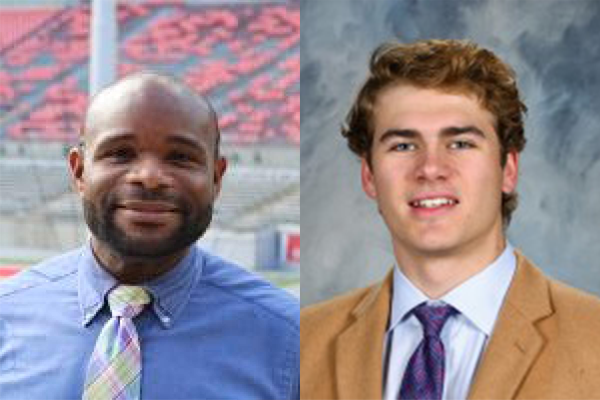Researching white women in the slave trade led to unique opportunity for economics undergraduate

Undergraduate research in higher education institutions isn’t rare. However, an undergraduate student being listed as a first author on a paper cited in The New York Times is significantly less common.
That is exactly what happened to Benton Wishart, who graduated with an economics degree from The Ohio State University in May 2024. Wishart is listed as the first author of the paper, “Her Property Transactions: White Women and the Frequency of Female Ownership in the Antebellum Era,” which went on to be discussed by The New York Times and The Economist.
In academic publishing, the first author is the name most often referenced when a paper is cited in future articles, making them the person most strongly associated with that project.
“It was a big shock to me and an absolute honor to be listed as the first author,” Wishart said. “I did not go into this expecting to be an author on an economics paper by the end of my time as the research assistant, but it was an incredible opportunity.”
Wishart took two classes with Trevon Logan, ENGIE-Axium Endowed Professor of Economics, as an undergraduate. After his second class, Wishart inquired about becoming a research assistant. Logan, who had already started the initial research into women’s involvement in the slave trade, saw Wishart’s skillset as an economics major and knew he had a role for him to play.
“Dr. Logan had an incredible background in the historical nature of this project, and we had these massive data sets, and there's just a lot of legwork within those. The biggest issue within the data sets was that they took down all of the reports on the slave transactions, but did not report the gender of the person who was buying or selling.”
Wishart’s primary role was to go through massive amounts of data and assign a gender to each buyer in the slave transactions during the Antebellum Era, which spans from the end of the War of 1812 to the start of the American Civil War in 1861. During that era, names that we would now consider female names were also common as male names, and vice versa. For instance, the name “Valerie” was common for both genders in that time period, according to Wishart.
“I used the census data on Ancestry.com and when I got to a name, I looked up the name on those reports and saw the breakdown of gender assigned on those census reports,” Wishart said. “That gave me a good figure to understand the proportion of male or female per each name.”
Logan and Wishart’s research concluded that white women participated in more than 30% of the transactions in the largest market for enslaved people in the Antebellum Era. As noted in the New York Times article, in New Orleans, between 1856 and 1861, white women participated in nearly 40% of the transactions involving Black women. This was likely a financial strategy, according to Logan, who explained that Black women could have children who would then also become the property of their enslavers, expanding the value of the initial investment.
This research is acknowledged by Stephanie Jones-Rogers as the first to “quantify the number of white women actively engaged in the enslavement of Black people.”
Jones-Rogers, a professor of history at the University of California, Berkeley, published a book in 2019 titled, “They Were Her Property,” discussing white women as slave owners in the American South. In the New York Times article, Jones-Rogers credits Logan and Wishart for adding thorough quantitative data to this specific area of research, where there had not previously been much information recorded.
“(Jones-Rogers) had very qualitative data, because she was looking at manuscripts from women at the time and finding rates of involvement from that, but she didn't have specific numbers from transactional records,” Wishart said. “So, this helps a greater body of research by actually giving a number of involvement and assigning that number to a time period and to women.”
Almost two years after research began and nearly one year after Wishart’s undergraduate graduation, the work on this project still isn’t finished.
“Benton and I are still communicating, because the paper is at a journal, and to get that published takes a really long time,” Logan said in March 2025. “When you get involved in undergraduate research, it's important to understand that it stays with you for a really long time. It’s something that you need to be able to commit to, even after you leave the university.”
A year post-graduation, Wishart is now an analyst for a hedge fund firm in Columbus. His experience as an undergraduate researcher at Ohio State has left him well-prepared for his career and hopeful that the work is making an impact on others.
“The publicity around it is incredible,” Wishart said. “I'm glad that it's being discussed, and I hope that it's making its way into classrooms and educating people who are in their education journey.”
Learn more about Dr. Logan and Wishart's work on How Involved Were White Women in the Slave Trade? from the Voices of Excellence podcast.

